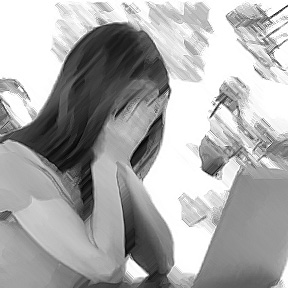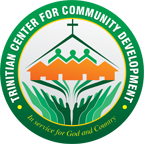Digital Stress and Coping amidst COVID-19
by Mary Ana Seline Angoluan, MA, RPm
 Since COVID-19 Pandemic hit the Philippines on March 2020 many people are now becoming very active in social media especially the young people. Because of the implementation of social distancing, quarantines and curfews many uses social media to connect with their friends and relatives. Aside from gaining connection social media has been a platform of information that becomes the source of different and opposing opinions. Because of this social media not only connects people but also a source of stress for others.
Since COVID-19 Pandemic hit the Philippines on March 2020 many people are now becoming very active in social media especially the young people. Because of the implementation of social distancing, quarantines and curfews many uses social media to connect with their friends and relatives. Aside from gaining connection social media has been a platform of information that becomes the source of different and opposing opinions. Because of this social media not only connects people but also a source of stress for others.
Abano (2020) states that many young people have been using social media to know more information about their friends, relatives, national issues and world issues like COVID-19. But not all information in social media are based from facts. The internet information is divided based on the beliefs and opinions of the writers. That is why Abano (2020) advised to check websites, blogs, and videos if there are from legitimate sources because it only divides followers that create opposition. And because of these the users experiences Digital Stress, or the stress from being active in social media.
According to Remedies (2020), the stress experienced through social media exposure is called Digital Stress. Most people who experience it are teenagers and young people. Digital Stress can come from the interaction in chats, emails, videos, forums, blogs and alike. It is triggered by mean opinions, different views and opposing interactions with the people in social media as well. In a research conducted by Weinstein and Selman (2014), they identified two types of digital stressors. Type I comprises imitation as a different person, harassment, and public humiliation like ad hominin, dead threats and alike. Type II involves forced compliance to divulge personal information, invasion of privacy and suffocation to answer back.
Digital Stress has also been the source of Mental Health issues. A research conducted by Pantic in 2014, the relationship of social media use on mental health have provided evidence that digital stress have triggered depression, self-esteem and addiction (Pantic, 2014). On a recent findings conducted in China amidst the COVID-19 Pandemic by Gao et al. states that due to the rise of social media use many young people are experiencing anxiety and depression (Gao, et al., 2020). In the Philippines, the National Center for Mental Health (NCMH) reported the rise of mental health inquiries from 80 calls monthly to 400 calls starting the announcement of the Enhanced Community Quarantine in the country. Most of the concerns are stress related, anxiety and depression (Felipe, 2020).According to Remedies (2020), the following are the common signs and symptoms to look at if someone is already experiencing Digital Stress:
- Physical conditions: migraines or headaches, abdominal pains, and neck pains.
- Anxiety or thoughts of worry, Panic attacks or bodily sensations similar of having a panic
- Increased irritability
- Antagonistic behavior
- Aggressive behaviors
- Failing performance on school, work and alike
In this digital world where stress can also come from social media it is necessary to understand the importance of coping skills. The next part will focus on the five ways to cope with digital stress.
Weinstein et al (2015) proposes five ways to cope with Digital Stress as follows:
- Seek help from others
Seek help from individuals who cares to the well-being of the individual like parents, friends, teachers and other people. Asking for help can help decrease Type I stressors like imitation as a different person or from abusive people who fakes their identity in social media, harassment, and public humiliation. Letting people getting involved in the stressor will help the individual understand the situation.
- Communicate the person involved in the digital stressor directly
One of the best ways to clear the atmosphere triggering stress is by talking to the person involved in the digital stressor itself. This will help clear miscommunication, and help understand each other’s point of view. It can also help the person understand the individual’s thoughts and feelings about the said phenomenon where the stress originated. Talking to the person directly can help the decrease public humiliation and Type II stressor: invading one’s privacy by setting limits to the person.
- Cut communication
One of the easiest ways is by cutting communication. This can be done by cutting source of stressor like unfollowing or unfriending stressful pages, person, social media platform or alike and turn to more positive page, or person. This will decrease Type II stressor: forced compliance to divulge personal information, and pressures to answer back.
- Avoiding the situation
Avoiding the situation can be done by not giving emphasis or too much attention about what the stressful situation is all about. The individual can ignore situations related to it as if it doesn’t exist. By doing this, the individual lessens the likelihood of Type I stressor: imitation as a different person (individuals or groups), and Type II stressor: forced compliance to divulge personal information.
- Use Online resources
Social media platforms have been the source of different information and fake media impersonators. To help reduce anxiety the individual can report the page, person, blog or social media platform used to cause digital stressor not only for the individual but also for others by doing this. In here digital stressor of impersonation decreases.
Social media has been the source of connection, information and entertainment for others especially in this kind of situation where the COVID-19 limited social interaction. But social media can also be the source of stress, anxiety and depression among others especially the young generation. Coping strategies to battle digital stress like seeking help from others, direct communication to the source of stress itself, cutting communications, avoiding the situation and use the social media itself to cope with the digital stressor can help reduce mental health issues.
References:
- Abano, I. (2020). Reporting the Unknown: How the Reporters in the Philippines cover Covid-19. Earth Journalism Network.
- Felipe, C. S. (2020). Mental health hotline: From 80 monthly calls to 400 nearly 400. PhilStar Global.
- Gao, J., Zheng, P., Jia, Y., Chen, H., Mao, Y., Chen, S., . . . Dai, J. (2020). Mental health problems and social media exposure during COVID-19 outbreak. PLoS ONE .
- Pantic, I. (2014). Online Social Networking and Mental Health. Cyberpsychol Behav Soc Netw. , 17(10): 652–657.
- Remedies, R. (2020). Digital Stress: What is it, how does it affect teens and how can you help? Children’s Hospital Los Angeles.
- Weinstein, E. C., & Selman, R. L. (2014). Digital stress: Adolescents’ personal accounts. Sage Pub: New Media and Publication.
- Weinstein, Selman, E. &., Thomas, R. &., Kim, S. &., White, J.-E. &., Dinakar, A. &., & Karthik. (2015). How to Cope With Digital Stress. Journal of Adolescent Research.
___
 About the Author: Mary Ana Seline Angoluan is a Registered Psychometrician (RPm), an alumna of Trinity University of Asia batch 2013, graduated Cum Laude, a consistent Dean’s Lister and grantee of A.L. Carson Scholarship. She earned her Master of Arts in Psychology major in Industrial Psychology at UST. She is joining Trinity University of Asia – College of Arts, Sciences and Education as full time Faculty of the Psychology Department by the opening of SY 2020-21.
About the Author: Mary Ana Seline Angoluan is a Registered Psychometrician (RPm), an alumna of Trinity University of Asia batch 2013, graduated Cum Laude, a consistent Dean’s Lister and grantee of A.L. Carson Scholarship. She earned her Master of Arts in Psychology major in Industrial Psychology at UST. She is joining Trinity University of Asia – College of Arts, Sciences and Education as full time Faculty of the Psychology Department by the opening of SY 2020-21.


 The Trinitian Center for Community Development is the official arm for Community Extension Service that supports Trinity University of Asia in carrying out its Vision and Mission of involving her constituents to live a LIFE that is GOD-centered and in service to the community.
The Trinitian Center for Community Development is the official arm for Community Extension Service that supports Trinity University of Asia in carrying out its Vision and Mission of involving her constituents to live a LIFE that is GOD-centered and in service to the community.